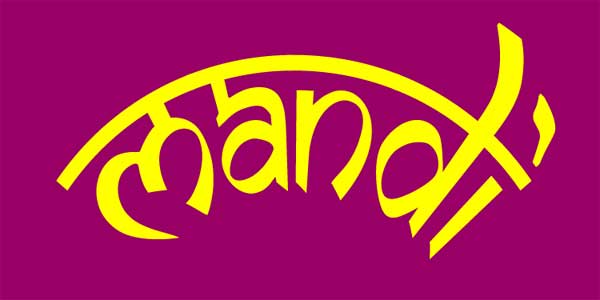 |
| Mandi
Himachal Pradesh is like something out of the fairy tale books of the brothers Grimm. It has a mystic, magical charm about it which makes you feel that any minute you might suddenly meet a giant striding across the hills or a leprechaun nestling amongst the leaves, or princesses floating in decorated boats down the rivers. It has castles perched on impossible crags and temples to all sorts of goddesses, some beneficent and some malefic. Actually it as beautiful as Kashmir but unfortunately or fortunately it has not been given a lot of publicity so it still retains its pristine charm especially in some of the little known towns. 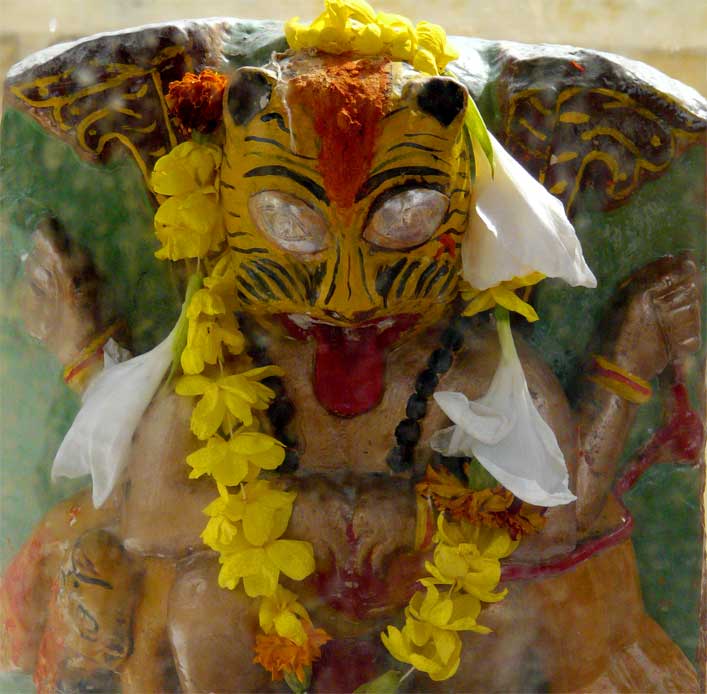 Lord Narasimha The whole countryside is riddled with hundreds of shrines to all types of devis (goddessess) and devatas (gods and sages). I was fortunate to go on a tour of many of these temples accompanied by our web master Arvind and his wife Chela. In fact we had been invited to Mandi for the famous Shivaratri (Night of Shiva) festival in February. 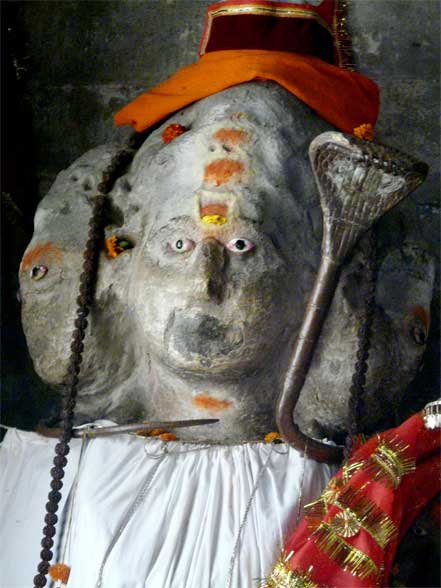 Trimukha Siva We started our journey in Chandigar and drove up the hilly slopes to the ancient town of Mandi where our hosts had arranged the Himachal tourist guest house for us. The next day our kind host took a day off and took us to many little shrines in and around Mandi. It has a picturesque group of ancient stone temples with tall “vimanas”, (spires), splendidly located below the town on the banks of the foaming river. My mind is a chaotic jumble of many shrines so I shall mention only a few which stand out vividly in my mind. 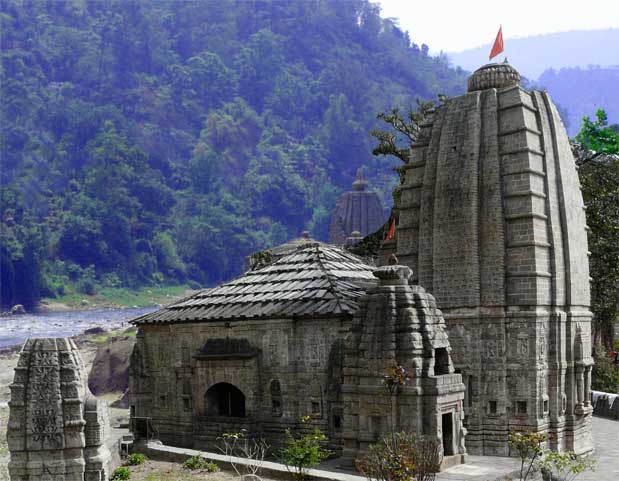 Triloknath Temple 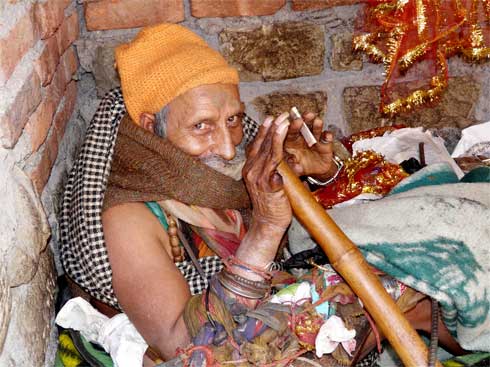 The Bhootanath temple is the most famous in Mandi and is situated in the very heart of the city. Before going into the temple we were struck by a small sort of a shack perched on a ledge in which lived a wizened up old man. Nobody knew how long he had been sitting there. Apparently he never leaves the shack and eats only what is brought for him by the villagers. In India such people are not considered as freaks but as enlightened souls. In most western countries such people would have been taken off to the lunatic asylum but here they are worshipped. Indians have always known of the existence of other realms of reality and they always respect people who actually live in such realms. Arvind went up to him and he actually took his shriveled hand with tortuous nails, dirty and curled up. He never refused any money but he never kept anything for himself and would give it to the villagers who took care of him. Actually the villagers only took care of his bodily needs but he was indeed a child of nature and no doubt he was entirely looked after by divine agents.  Mandi Nandi The temple itself is as old as the city which dates back to the 16th century. You can see the soaring spire as you approach. On the left is a well which has now been fenced off. Apparently in olden times this used to be the place where the ashes of those women who committed sati (immolation in the fire when the husband dies), was thrown. As you enter the main building you see the back of a magnificent bull – Nandi, Shiva’s vehicle which sits facing the double arch which leads to the sanctuary. Bhootanath is the Lord of all goblins and spirits. Shiva is the essence of compassion and he always welcomes those creatures which are shunned and despised by others. Those tortured souls who haunt the cremation grounds and those who have not attained final liberation and hover around this earthly sphere are always welcomed by him. Such is the greatness of this Maheswara- the great Lord. Shivaratri of course is celebrated in style in this temple 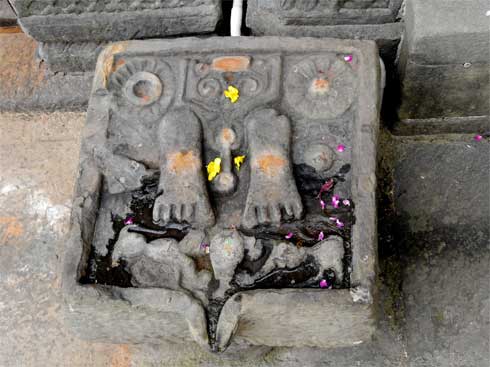 Triloknath Temple The next most important temple is the Tarna Devi temple on top of the hill called Tarna which is a landmark in the town and which can be reached by a flight of steps from the market itself. She is also known as Shyama Kali or the black Kali. Of course no one has ever heard of a white Kali so I’m not sure why this name was given. Raja Shyama Sen is supposed to have built this temple in the 17th century in gratitude for the favours she showered on him when he was in desperate straits.  Tarna Devi The temple normally closed at 8 pm and by the time we finished visiting all the other temples in the town it was really dark. I was frantic to get there before it closed but as luck would have it just as we got out of the car we saw the pujari (priest) coming out of the temple after having locked the door. Someone pointed him out to us and proclaimed that once the temple was closed he would never open it till the next morning. It was a real blow to me since we were leaving the next day and there would have been no opportunity to visit Her the next day and I had a great thirst to see her. I ran up to the priest and looked piteously at him and said that we had come all the way from Rishikesh just to see her. He looked piercingly into my eyes and then without speaking a word he turned round and went back to the temple and opened the huge silver doors and beckoned us to go in!! My face streaming with tears, I ran in and prostrated before her. What can one say of such grace? He allowed us to stay a while and then I asked him to place the mask of the goddess which I had with me at the feet of the goddess and consecrate it. He stood outside the rope which separated us from the altar and threw it in. I was not sure why he did this. We sat inside for a while and when we were ready to leave I looked expectantly at him, waiting for him to return the copper mask to me to me but he was all set to leave. Maybe he hadn’t understood what I wanted. I asked our host to explain it to him. The priest looked a bit put out and said that he could not enter the sanctorum without putting on his special dhoti. But he kindly told me that I could come the next morning and he would give it to me. I looked blankly at him and my host once again explained my predicament - that we were leaving early the next morning. Again without a word he went out of the temple to his quarters and returned wearing the ceremonial dhoti and retrieved the mask for me. Again I was bereft of words and could only bow to him and to Her. Our host told us later that when he asked the priest why he did such an unusual thing as opening the temple after it was closed for the night as it was against the norm, all he said was, “She told me to open it!” We stayed outside the temple watching the wonderful view of the city but I had eyes for nothing. All I could do was to sit in the shade of a banyan tree with overflowing heart and eyes and thank Her again and again for Her grace. 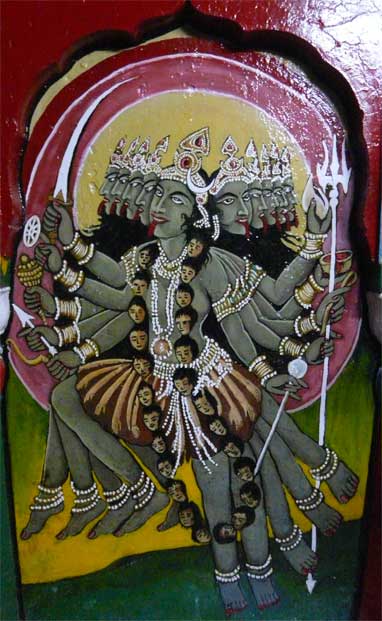 Mandi Mela As mentioned before we had come for the Mandi Mela or Fair. This was a very special type of Fair. Himachal is filled with shrines to various gods and goddesses. In ancient times when there was no police force to protect a town or village, they resorted to divine powers to help them. This every village had its own deva or devata, who were guardian deities and were often kept at the entrance to the village. Many stories are told of how these deities did indeed protect their worshippers from all harm including epidemics of small pox and plague. During the festival of Shivaratri all these minor deities congregated together at Mandi to meet each other and bless the devotees of the other village deities.  Congregations came one by one from each of the surrounding villages carrying their deities on their heads, followed by drummers and other musicians and men carrying gaily coloured banners. Traffic was totally suspended on that day and the processions wound their way to the large grounds in the center of the town. 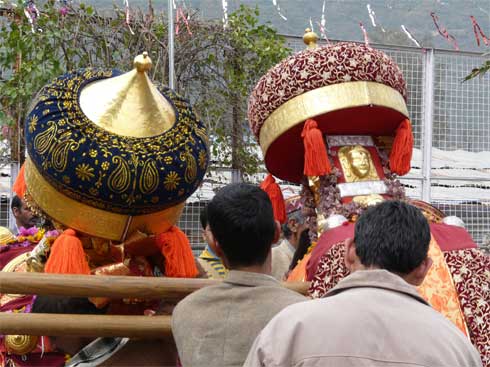 Devata's Talking As they came in they could be seen talking to their sisters from other villages. This was done in a unique fashion. The men carrying the deities would dance towards the other batch and bow to him or her and whisper something or other. After this they would keep dancing back and forth as if they were indeed talking to each other. This was quite a remarkable sight. By then end of the day the whole ground was lined with small batches from over two hundred villages. It was a fantastic sight. Many of these deities were known to be famous fortune tellers and villagers would squat before them and ask questions and get favourable or unfavourable answers as the case may be. Since most of them came from very poor villages it was considered a blessing to give them some donation! Shivaratri night was celebrated at our host’s abode and was a great joy. The next day the all the deities would go in procession towards the palace of the Mandi King and assemble there. Of course spirituality was only one side of the coin of life and attached to the field of the devatas was a carnival with the usual shops selling cheap Chinese goods and a make shift fairy wheel and swings and sweet shops for children. We left the next morning for our next destination, our ears filled with sound of the drums and our hearts with gratitude for having been blessed to attend such an amazing collection of divine beings! Hari Aum Tat Sat |
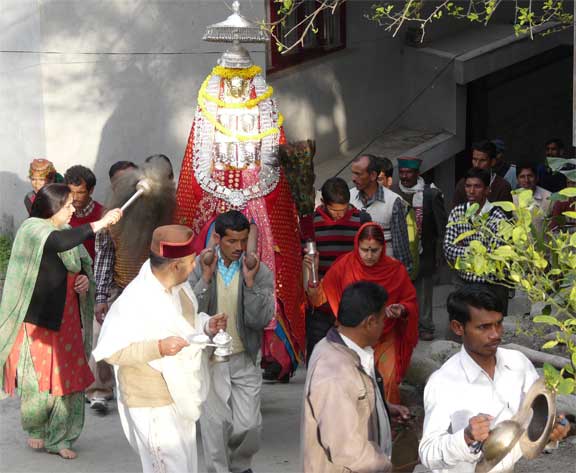 Procession of Village Devata on Shivaratri Deva is the Hindu term for deity; devatas are a kind of smaller more focused devas, the equivalent of guardian spirits or guardian angels. They are generally thought of as female. There are many kinds of devatas: vanadevatas (forest spirits, perhaps descendants of early nature-spirit cults), gramadevata (village gods), devata of river crossings, caves, mountains, and so on. Each caste has its guardian deva, and every human activity has its devata, its spiritual counterpart or aspect. |
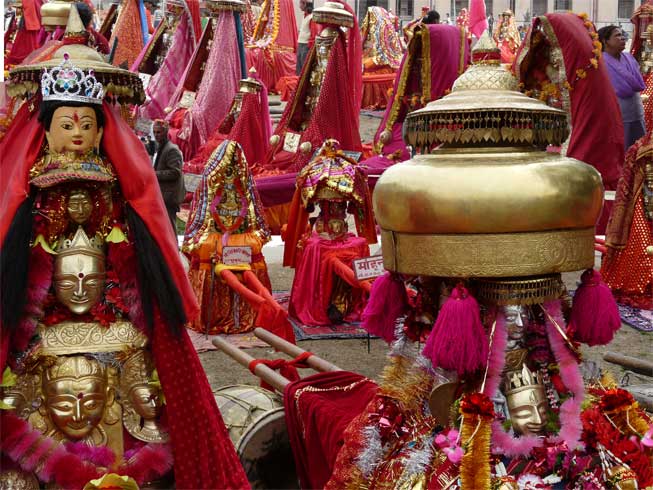 Over 250 Village Devatas gather for Shivaratri in Mandi |
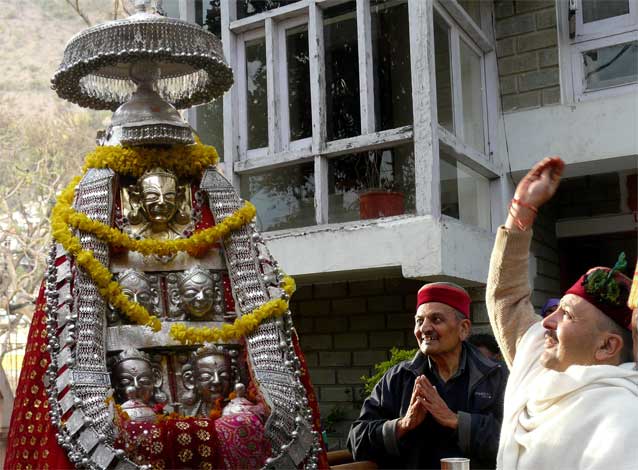 Sri Suresh & Raman Bisht welcome the Devata |
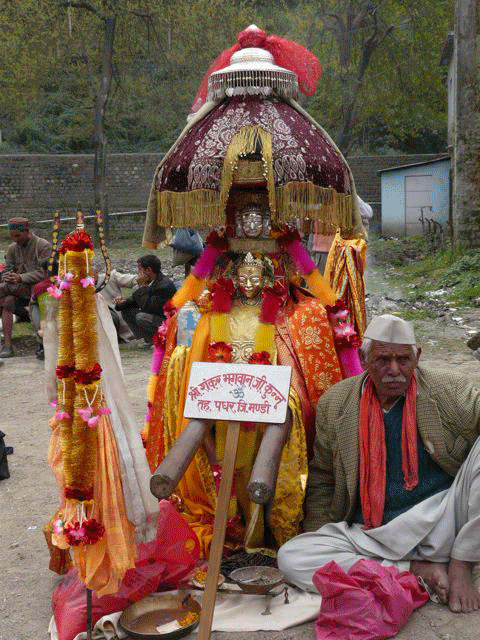 |
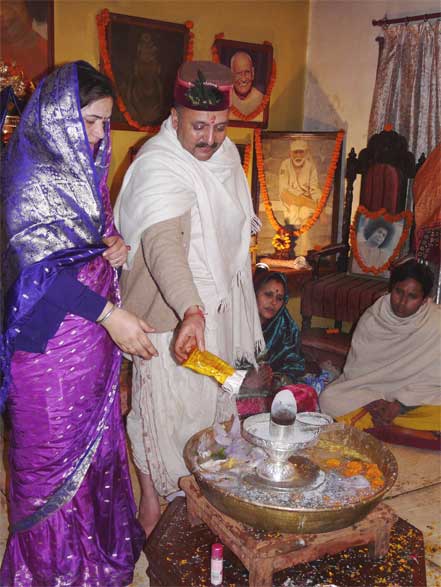 Shivaratri with the Bisht Family at Mandi |
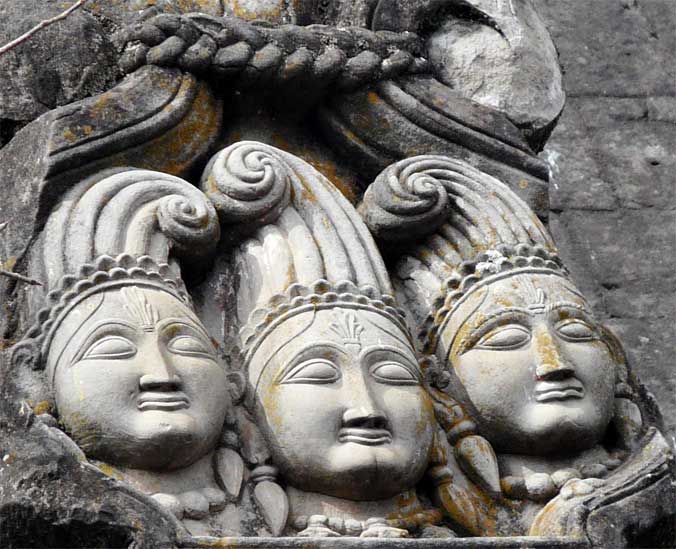 |
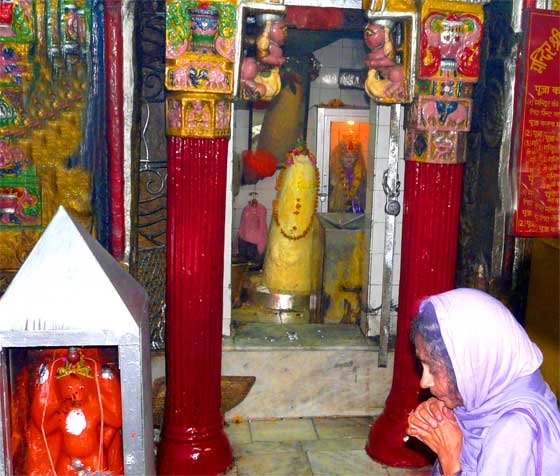 Bhutnath Temple |
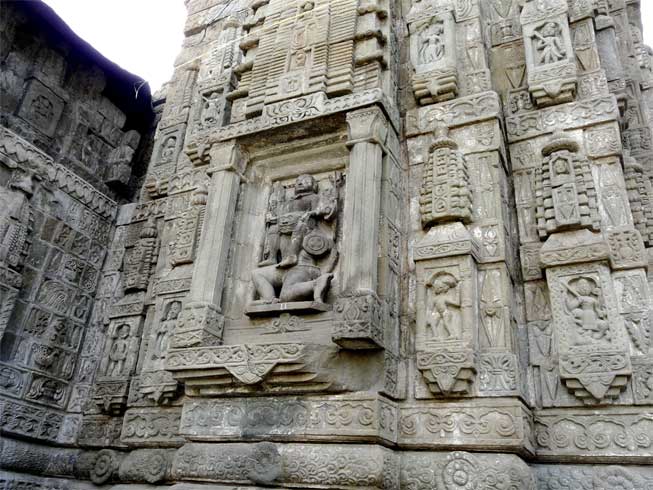 |
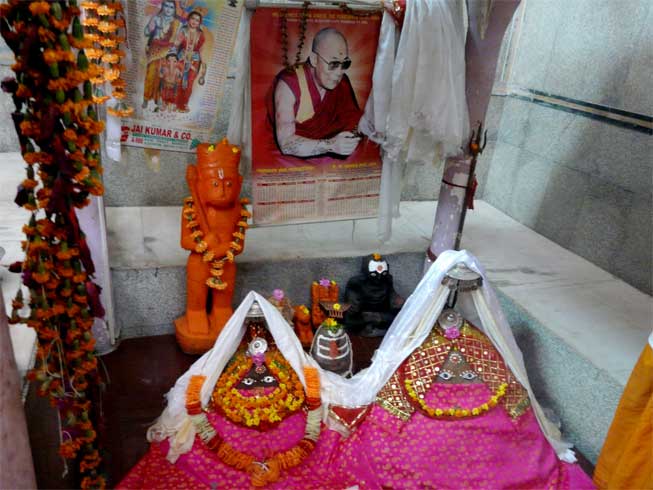 |
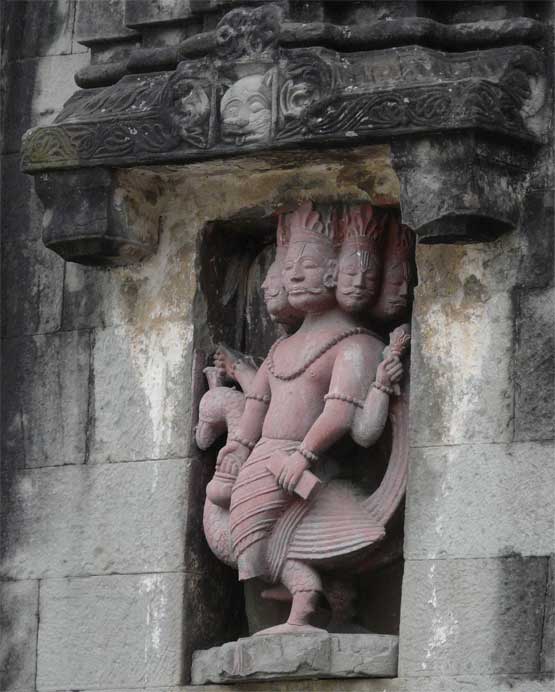 |